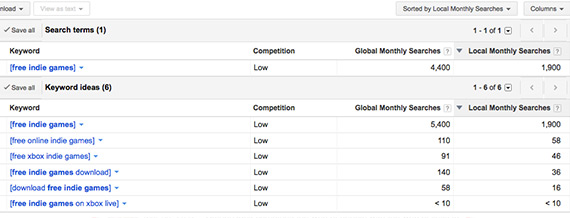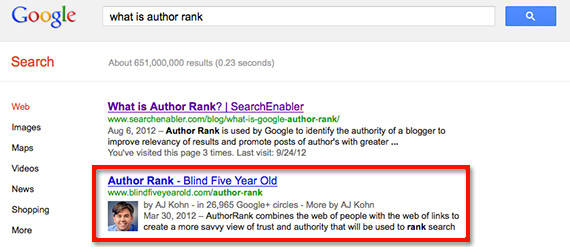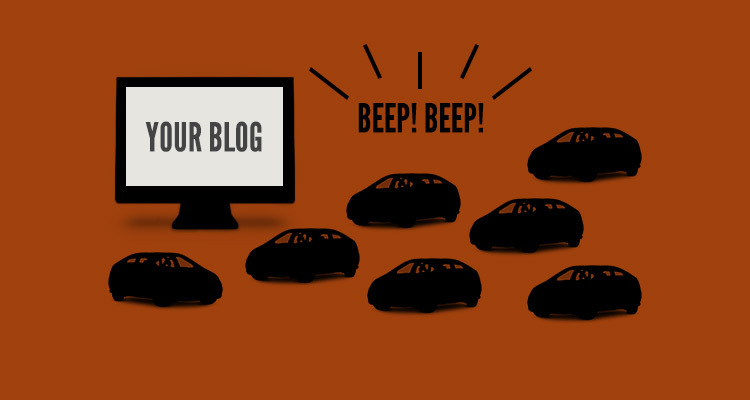How to Get Traffic to Your Blog via SEO
Anyone who tells you that blogging is about writing as much content as possible and hoping something sticks, is a loser who doesn’t know how to get traffic to your blog. Blogging is a science, a science of SEO. There is a blogging formula that produces results when followed and the sound of crickets when not. We’ll review in detail below, but the formula goes something like this:
Great Content + Keywords + Keyword Usage + AuthorRank + Promotion = Traffic
How to Get Traffic to Your Blog via SEO
- Start with Great ContentBefore you dive into the science of blogging for SEO, you need to have a reader-focused mindset about your posts. SEO will only help you if your posts are (1) written for your intended audience, (2) original and (3) free of spelling and grammatical errors. (Yes, Google actually docks you for spelling and grammar in its ranking algorithms…so double check everything).
- Choose the Right KeywordsKnowing how to drive traffic to your blog starts with knowing how to choose the right keywords. After you’ve decided what to write about, head over to the Google Keyword Tool to begin. Start by searching words and phrases a reader might use to find your content. Refine your search based on what Google suggests as keyword ideas. Look for keywords that have a good amount of local monthly searches and aren’t too competitive. Select one primary keyword and two to three secondary, related keywords. For example, if your primary keyword is “free indie games,” your secondary keywords could be “free online indie games,” “free indie games download” and “download free indie games.”

- Use Your Keywords in the Right Places
Placement of your primary and secondary keywords plays a critical role in SEO. Here are the most important places to put them:- Blog Title: the first three words in the your blog’s title are the most important to Web crawlers. Try to fit all, or at least most, of your primary keyword here. If we continue with the example of “free indie games,” your title could be “Free Indie Games You’ll Love to Play.” Keep titles to no more than 70 characters long.
- Title Tag: use your post’s title for your title tag. Don’t include your website’s name.
- URL: your blog’s title should also be its URL. E.g., http://www.yourwebsite.com/free-indie-games-youll-love-to-play.
- Meta Description: meta descriptions help boost your SEO with little effort. Good meta descriptions are short summaries of your post, 160 characters or less and contain your primary keyword.
- H Tags: use your primary keyword in at least one h tag.
- First Paragraph: your primary keyword doesn’t have to be in your blog’s first sentence, but it needs to be in your first paragraph. Closer to the beginning is better.
- Blog’s Body: to have a fighting chance at a decent ranking, your blog should have at least 500 words. Within these 500 words, your primary keyword needs to appear at least three times and your secondary keywords should appear at least once.
- Images: use secondary keywords in image file names (e.g., /free-online-indie-games-feature-image.jpg) and make sure every one has a descriptive alt tag.
- Links: never, never, never link anchor text that reads something like “read more,” “watch video,” etc. Instead, use anchor text as an opportunity to get a keyword in, e.g., “watch this free indie games trailer.”
- Set Up Author Rank
Author Rank is what Google uses to connect you to the content that you produce via your Google+ profile. It helps Google determine your Web authority and how your should be placed in Page Rank. In addition, it displays like a rich snippet in organic search results. For a great article on how to get more traffic to your blog by setting up Author Rank correctly, check out “How to Prepare for AuthorRank and Get the Jump on Google,” by Mike Arnesen at SEOmoz.
- Promote
Once you’ve written and published your blog, it’s important that you link to it however you can. This will help both people and Google discover it faster. Social media channels are a great place to start, but don’t forgot to link from other websites you may have, as well as forums you’re active in, etc.
For more great tips and tricks on how to get free traffic to your blog, read Google’s Search Engine Optimization Starter Guide.
Leave a Comment
Only registerd members can post a comment , Login / Register




3 Comments
Liz
about 13 years agoGreat post, Emmy! Lots of actionable information.
Emmy
about 13 years agoThanks Liz! Glad you liked it ;)
Turska Games
about 12 years agoThanks! This is a nice, helpful and compact guide, and exactly what I (literally) asked for.